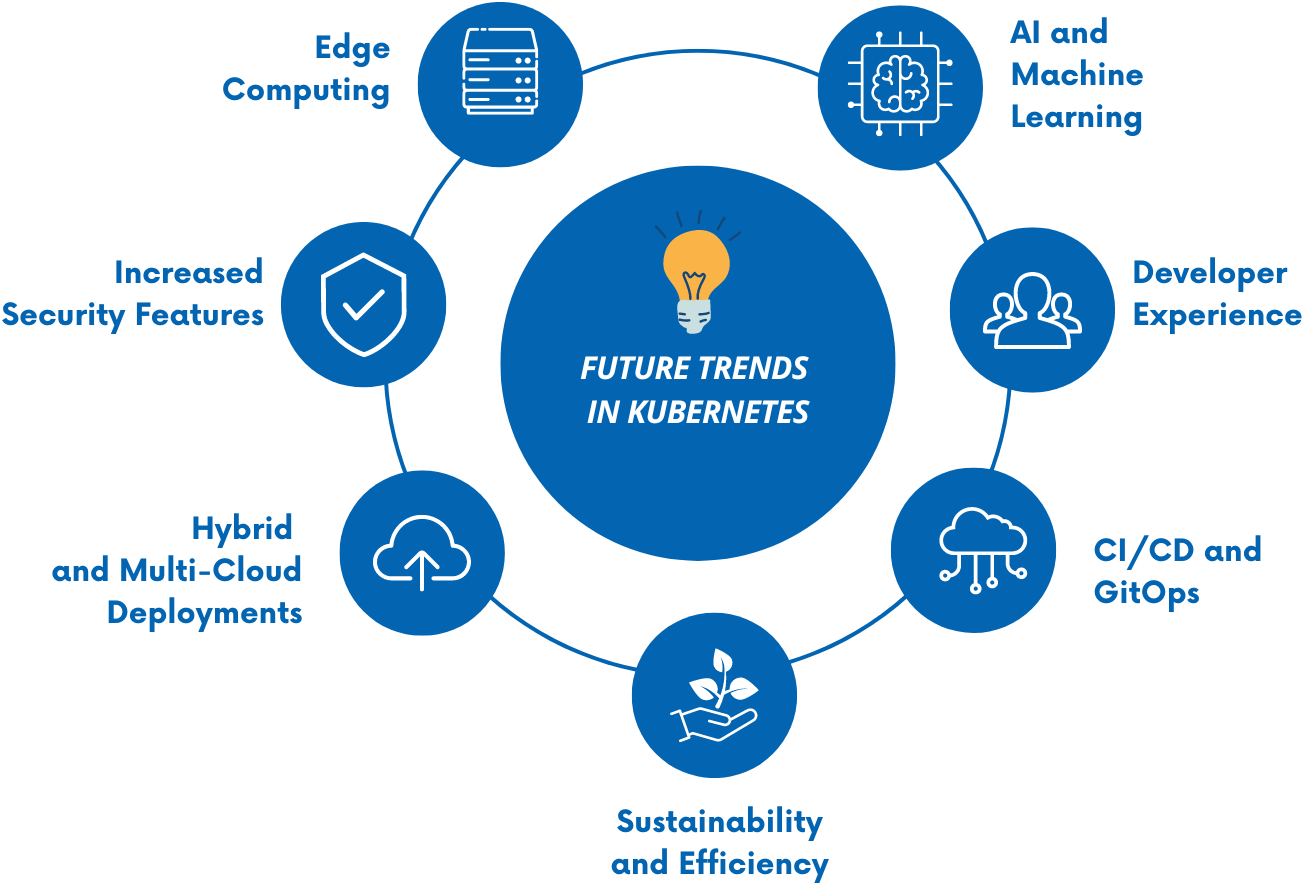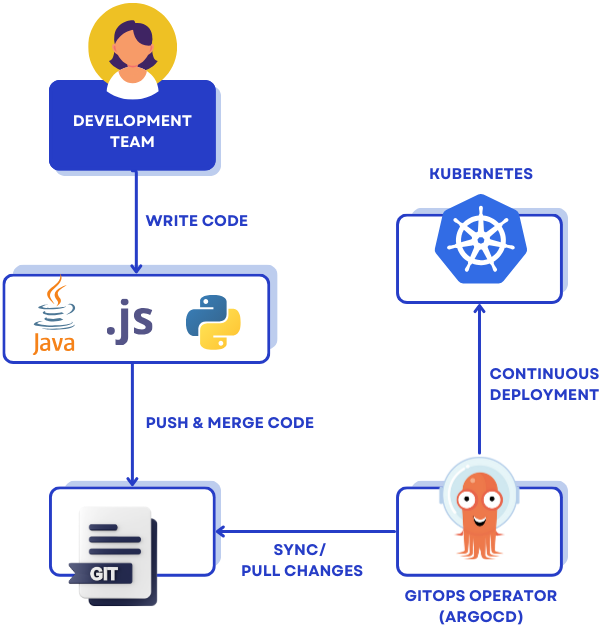A Decade of Excellence: The Journey, Impact, and Future of Kubernetes
Explore the journey of Kubernetes over the past 10 years, its impact on the SDLC and developers, and the trends and innovations that will shape its next decade.
Join the DZone community and get the full member experience.
Join For FreeEditor's Note: The following is an article written for and published in DZone's 2024 Trend Report, Kubernetes in the Enterprise: Once Decade-Defining, Now Forging a Future in the SDLC.
A decade ago, Google introduced Kubernetes to simplify the management of containerized applications. Since then, it has fundamentally transformed the software development and operations landscape. Today, Kubernetes has seen numerous enhancements and integrations, becoming the de facto standard for container orchestration.
This article explores the journey of Kubernetes over the past 10 years, its impact on the software development lifecycle (SDLC) and developers, and the trends and innovations that will shape its next decade.
The Evolution of Kubernetes
Kubernetes, often referred to as K8s, had its first commit pushed to GitHub on June 6, 2014. About a year later, on July 21, 2015, Kubernetes V1 was released, featuring 14,000 commits from 400 contributors. Simultaneously, the Linux Foundation announced the formation of the Cloud Native Computing Foundation (CNCF) to advance state-of-the-art technologies for building cloud-native applications and services. After that, Google donated Kubernetes to the CNCF, marking a significant milestone in its development.
Kubernetes addressed a critical need in the software industry: managing the lifecycle of containerized applications. Before Kubernetes, developers struggled with orchestrating containers, leading to inefficiencies and complexities in deployment processes. Kubernetes brought advanced container management functionality and quickly gained popularity due to its robust capabilities in automating the deployment, scaling, and operations of containers.
While early versions of Kubernetes introduced the foundation for container orchestration, the project has since undergone significant improvements. Major updates have introduced sophisticated features such as StatefulSets for managing stateful applications, advanced networking capabilities, and enhanced security measures. The introduction of Custom Resource Definitions (CRDs) and Operators has further extended its functionality, allowing users to manage complex applications and workflows with greater ease.
In addition, the community has grown significantly over the past decade. According to the 2023 Project Journey Report, Kubernetes now has over 74,680 contributors, making it the second-largest open-source project in the world after Linux. Over the years, Kubernetes has seen numerous enhancements and integrations, becoming the de facto standard for container orchestration. The active open source community and the extensive ecosystem of tools and projects have made Kubernetes an essential technology for modern software development. It is now the "primary container orchestration tool for 71% of Fortune 100 companies" (Project Journey Report).
Kubernetes' Impact on the SDLC and Developers
Kubernetes abstracts away the complexities of container orchestration and allows developers to focus on development rather than worry about application deployment and orchestration. The benefits and key impacts on the SDLC and developer workflows include enhanced development and testing, efficient deployment, operational efficiency, improved security, and support for microservices architecture.
Enhanced Development and Testing
Kubernetes ensures consistency for applications running across testing, development, and production environments, regardless of whether the infrastructure is on-premises, cloud based, or a hybrid setup. This level of consistency, along with the capability to quickly spin up and tear down environments, significantly accelerates development cycles. By promoting portability, Kubernetes also helps enterprises avoid vendor lock-in and refine their cloud strategies, leading to a more flexible and efficient development process.
Efficient Deployment
Kubernetes automates numerous aspects of application deployment, such as service discovery, load balancing, scaling, and self-healing. This automation reduces manual effort, minimizes human error, and ensures reliable and repeatable deployments, reducing downtime and deployment failures.
Operational Efficiency
Kubernetes efficiently manages resources by dynamically allocating them based on the application's needs. It ensures operations remain cost effective while maintaining optimal performance and use of computing resources by scheduling containers based on resource requirements and availability.
Security
Kubernetes enhances security by providing container isolation and managing permissions. Its built-in security features allow developers to build secure applications without deep security expertise. Such built-in features include role-based access control, which ensures that only authorized users can access specific resources and perform certain actions. It also supports secrets management to securely store and manage sensitive information like passwords and API keys.
Microservices Architecture
Kubernetes has facilitated the adoption of microservices architecture by enabling developers to deploy, manage, and scale individual microservices independently. Each microservice can be packaged into a separate container, providing isolation and ensuring that dependencies are managed within the container. Kubernetes' service discovery and load balancing features enable communication between microservices, while its support for automated scaling and self-healing ensures high availability and resilience.
Predictions for the Next Decade
After a decade, it has become clear that Kubernetes is now the standard technology for container orchestration that's used by many enterprises. According to the CNCF Annual Survey 2023, the usage of Kubernetes continues to grow, with significant adoption across different industries and use cases. Its reliability and flexibility make it a preferred choice for mission-critical applications, including databases, CI/CD pipelines, and AI and machine learning (ML) workloads. As a result, there is a growing demand for new features and enhancements, as well as simplifying concepts for users. The community is now prioritizing improvements that not only enhance user experiences but also promote the sustainability of the project. Figure 1 illustrates the anticipated future trends in Kubernetes, and below are the trends and innovations expected to shape Kubernetes' future in more detail.
Figure 1. Future trends in Kubernetes

AI and Machine Learning
Kubernetes is increasingly used to orchestrate AI and ML workloads, supporting the deployment and management of complex ML pipelines. This simplifies the integration and scaling of AI applications across various environments. Innovations such as Kubeflow — an open-source platform designed to optimize the deployment, orchestration, and management of ML workflows on Kubernetes — enable data scientists to focus more on model development and less on infrastructure concerns.
According to the recent CNCF open-source project velocity report, Kubeflow appeared on the top 30 CNCF project list for the first time in 2023, highlighting its growing importance in the ecosystem. Addressing the resource-intensive demands of AI introduces new challenges that contributors are focusing on, shaping the future of Kubernetes in the realm of AI and ML.
The Developer Experience
As Kubernetes evolves, its complexity can create challenges for new users. Hence, improving the user experience is crucial moving forward. Tools like Backstage are revolutionizing how developers work with Kubernetes and speeding up the development process. The CNCF's open-source project velocity report also states that "Backstage is addressing a significant pain point around developer experience."
Moreover, the importance of platform engineering is increasingly recognized by companies. This emerging trend is expected to grow, with the goal of reducing the learning curve and making it easier for developers to adopt Kubernetes, thereby accelerating the development process and improving productivity.
CI/CD and GitOps
Kubernetes is revolutionizing continuous integration and continuous deployment (CI/CD) pipelines through the adoption of GitOps practices. GitOps uses Git repositories as the source of truth for declarative infrastructure and applications, enabling automated deployments. Tools like ArgoCD and Flux are being widely adopted to simplify the deployment process, reduce human error, and ensure consistency across environments. Figure 2 shows the integration between a GitOps operator, such as ArgoCD, and Kubernetes for managing deployments. This trend is expected to grow, making CI/CD pipelines more robust and efficient.
Figure 2. Kubernetes GitOps

Sustainability and Efficiency
Cloud computing's carbon footprint now exceeds the airline industry, making sustainability and operational efficiency crucial in Kubernetes deployments. The Kubernetes community is actively developing features to optimize resource usage, reduce energy consumption, and enhance the overall efficiency of Kubernetes clusters. CNCF projects like KEDA (Kubernetes event-driven autoscaling) and Karpenter (just-in-time nodes for any Kubernetes cluster) are at the forefront of this effort. These tools not only contribute to cost savings but also align with global sustainability goals.
Hybrid and Multi-Cloud Deployments
According to the CNCF Annual Survey 2023, multi-cloud solutions are now the norm: Multi-cloud solutions (hybrid and other cloud combinations) are used by 56% of organizations. Deploying applications across hybrid and multi-cloud environments is one of Kubernetes' most significant advantages. This flexibility enables organizations to avoid vendor lock-in, optimize costs, and enhance resilience by distributing workloads across multiple cloud providers. Future developments in Kubernetes will focus on improving and simplifying management across different cloud platforms, making hybrid and multi-cloud deployments even more efficient.
Increased Security Features
Security continues to be a top priority for Kubernetes deployments. The community is actively enhancing security features to address vulnerabilities and emerging threats. These efforts include improvements to network policies, stronger identity and access management (IAM), and more advanced encryption mechanisms. For instance, the 2024 CNCF open-source project velocity report highlighted that Keycloak, which joined CNCF last year as an incubating project, is playing a vital role in advancing open-source IAM, backed by a large and active community.
Edge Computing
Kubernetes is playing a crucial role in the evolution of edge computing. By enabling consistent deployment, monitoring, and management of applications at the edge, Kubernetes significantly reduces latency, enhances real-time processing capabilities, and supports emerging use cases like IoT and 5G. Projects like KubeEdge and K3s are at the forefront of this movement. We can expect further optimizations for lightweight and resource-constrained environments, making Kubernetes even more suitable for edge computing scenarios.
Conclusion
Kubernetes has revolutionized cloud-native computing, transforming how we develop, deploy, and manage applications. As Kelsey Hightower noted in Google's Kubernetes Podcast, "We are only halfway through its journey, with the next decade expected to see Kubernetes mature to the point where it 'gets out of the way' by doing its job so well that it becomes naturally integrated into the background of our infrastructure." Kubernetes' influence will only grow, shaping the future of technology and empowering organizations to innovate and thrive in an increasingly complex landscape.
References:
- "10 Years of Kubernetes" by Bob Killen et al, 2024
- CNCF Annual Survey 2023 by CNCF, 2023
- "As we reach mid-year 2024, a look at CNCF, Linux Foundation, and top 30 open source project velocity" by Chris Aniszczyk, CNCF, 2024
- "Orchestration Celebration: 10 Years of Kubernetes" by Adrian Bridgwater, 2024
- "Kubernetes: Beyond Container Orchestration" by Pratik Prakash, 2022
- "The Staggering Ecological Impacts of Computation and the Cloud" by Steven Gonzalez Monserrate, 2022
This is an excerpt from DZone's 2024 Trend Report, Kubernetes in the Enterprise: Once Decade-Defining, Now Forging a Future in the SDLC.
Read the Free Report
Opinions expressed by DZone contributors are their own.

Comments